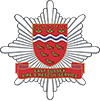What is a False Alarm?
A false alarm occurs when a fire alarm system is triggered without a real fire or emergency.
The point at which the Fire and Rescue Service is requested and responds to a false alarm is referred to as an Unwanted Fire Signal (UwFS).
False alarms can be caused by a variety of factors, including
- system malfunctions,
- environmental factors like steam or dust,
- accidental activations, or
- misuse of alarm systems.
By understanding what causes false alarms, both homeowners and businesses can take steps to prevent them.
The Impact of False Alarms
False alarms can cause unnecessary disruptions, waste emergency resources, and divert firefighters away from real emergencies where they are needed most.
As of 1 April 2024, the Service no longer attends fire alarms operating in low-risk commercial premises, unless we receive telephone confirmation that there is a fire.
Low-risk premises are classified as premises with no sleeping risk, such as
- offices,
- shops,
- schools,
- factories,
- pubs,
- clubs
- restaurants.
How Can You Reduce False Alarms for Your Business?
Businesses, especially those with automatic fire alarm (AFA) systems, can experience frequent false alarms if systems are not properly managed. Here’s how businesses can help reduce them:
- Appoint a Responsible Person – as per the requirements of the Fire Safety Order 2005, to ensure matters relating to fire safety within the premises (including the fire alarm system) are adhered to.
- Implement a maintenance plan – Schedule regular inspections and servicing of fire alarm systems to ensure they are working correctly and not prone to false activations.
- Use the right type of detectors – Smoke detectors should be suitable for the environment. For example, heat detectors may be more appropriate in areas with high levels of dust or steam.
- Ensure proper installation – Make sure fire alarms are installed by qualified professionals who position them correctly to avoid unnecessary activations.
- Train staff – Employees should be aware of fire safety procedures, how to use alarm systems properly, and how to prevent accidental activations.
- Manage cooking and smoking areas – Ensure cooking areas are well-ventilated and that smoking is only permitted in designated areas away from fire alarms.
- Monitor construction or refurbishment work – Dust and fumes from building work can trigger alarms. Use temporary covers on detectors where necessary (but ensure they are removed after work is complete).
- Review false alarm data – Keep track of alarm activations and investigate recurring issues to implement solutions.
Not a Business?
Visit Smoke Alarms | East Sussex Fire & Rescue Service to find out how you can reduce false alarms in the home.
Working Together to Reduce False Alarms
Preventing false alarms is a shared responsibility. Taking proactive steps to maintain and use alarm systems correctly can significantly reduce the occurrence of false alarms and Unwanted Fire Signals (UwFS).
If you have a problem with repeat false fire alarm activations or you would like to discuss the issue of false alarms (unwanted fire signals) in general, please contact your local Fire Safety Office at Fire Safety Offices | East Sussex Fire & Rescue Service
